Marlin Firearms made big news recently by launching its first rifle since being acquired in 2020 by Sturm, Ruger, and Company: the Marlin Model 1895 SBL chambered in the potent .45-70 Govt., and manufactured in Mayodan, North Carolina. Ruger, as was widely reported, purchased Marlin after the Remington Outdoor Company declared bankruptcy and its assets were sold, including the Marlin brand.
A fan of the Remington-owned Marlin, I asked for and received a new SBL. It is a first-rate lever action, and Ruger has clearly invested substantial time, money, and manufacturing expertise in this rifle.
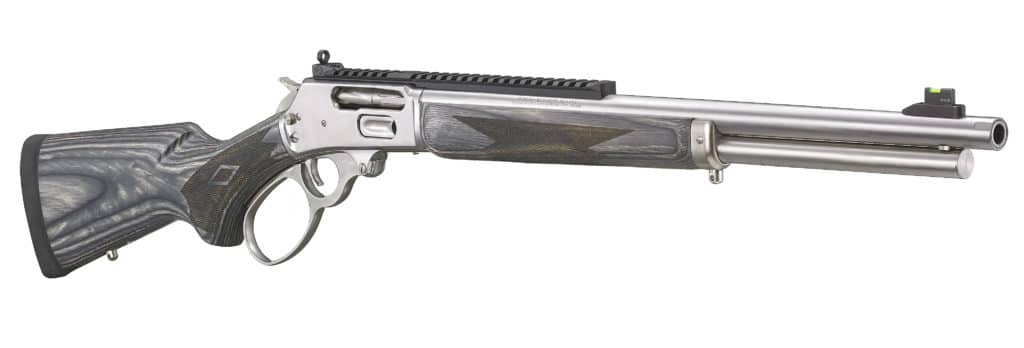
I keep reading about how lever actions are great for home defense and I would certainly use it for such if it was my lone option. But, first and foremost, the SBL is a hunting rifle and this rifle and big bore caliber are a perfect match for big game at distances of 200 yards or less.
Out of the box, the first thing I noticed about the 1895 SBL was the long Picatinny rail atop the receiver and extending forward to nearly the midpoint of the barrel. The rail measures a full 11-inches and represents a nod to the reality that, while the lever action’s roots are in the Old West, these rifles are frequently being outfitted with optics nowadays. The longer rail allows for a traditional rifle scope to be mounted or a scout-type scope with long eye relief.
The SBL’s rail can also handle a thermal or night vision optic.
The “S” in the SBL stands for stainless and the SBL’s barrel, receiver, and lever are manufactured from nicely polished stainless steel. The bolt is nickel-plated and fluted, for a distinctive look. The rifle’s open sights feature a ghost ring rear, adjustable for windage and elevation, and tritium fiber, high visibility day/night front sight.
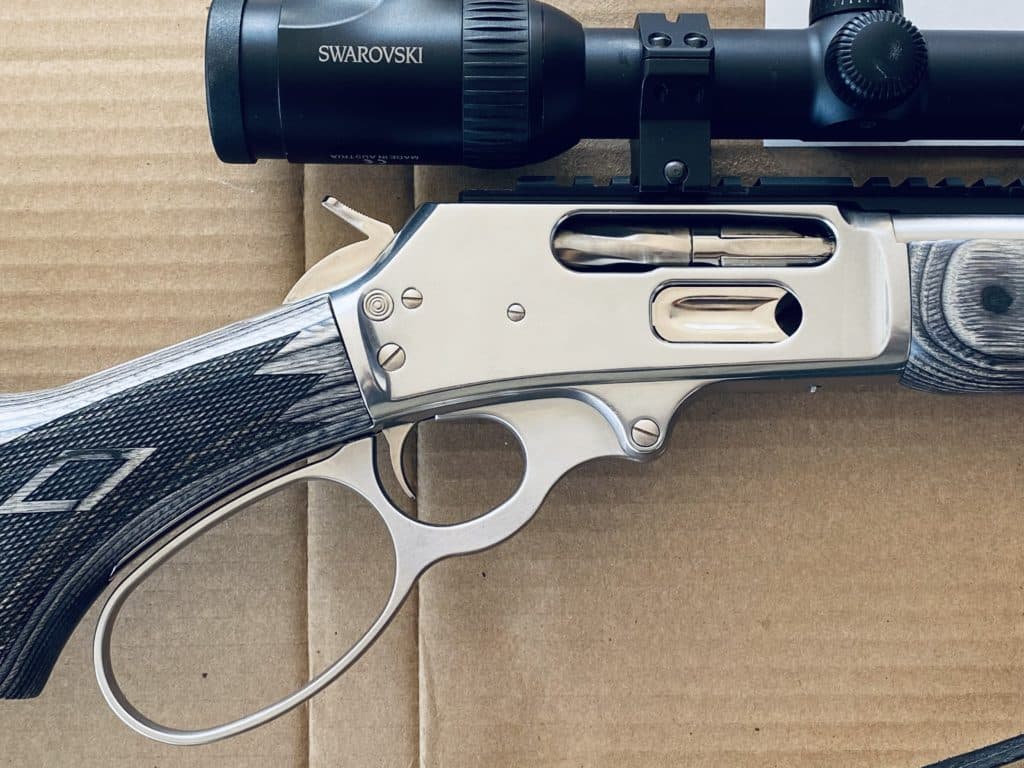
The “BL” stands for the SBL’s big loop lever, and it worked smoothly throughout my time with the rifle.
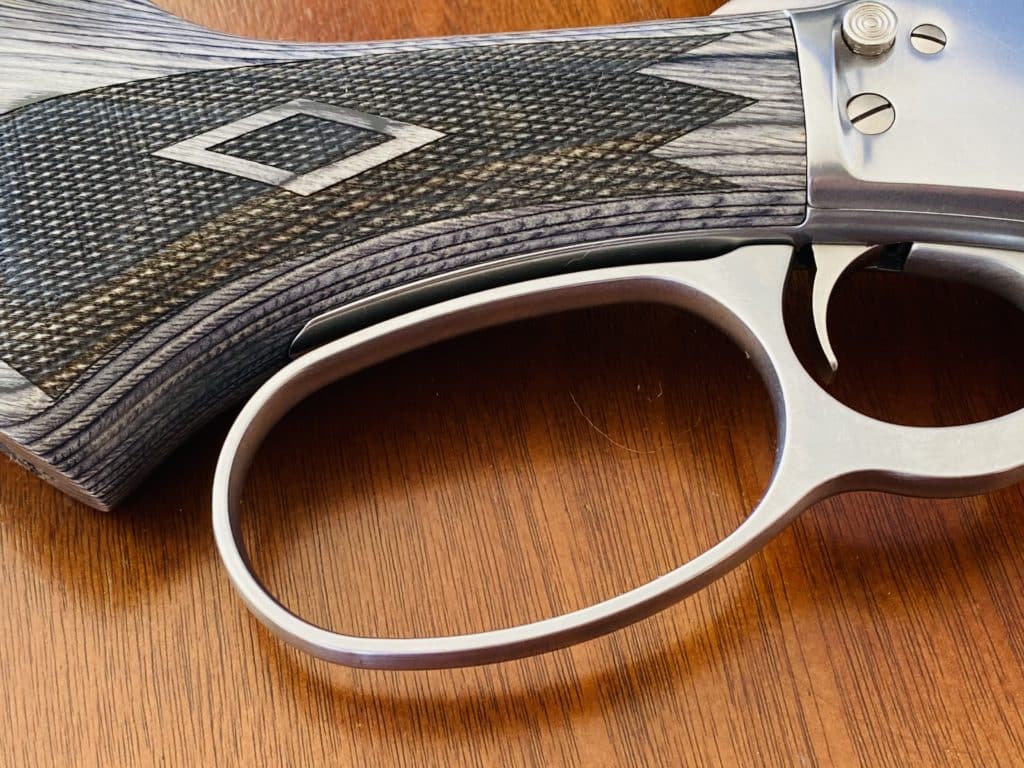
Ruger made the wooden forend a bit thinner than the original 1895 for a more secure grip. Forend and stock are made of laminated wood done in a grayish, weathered-looking finish. Checkered panel grips are cut into both sides of the forend and grip.
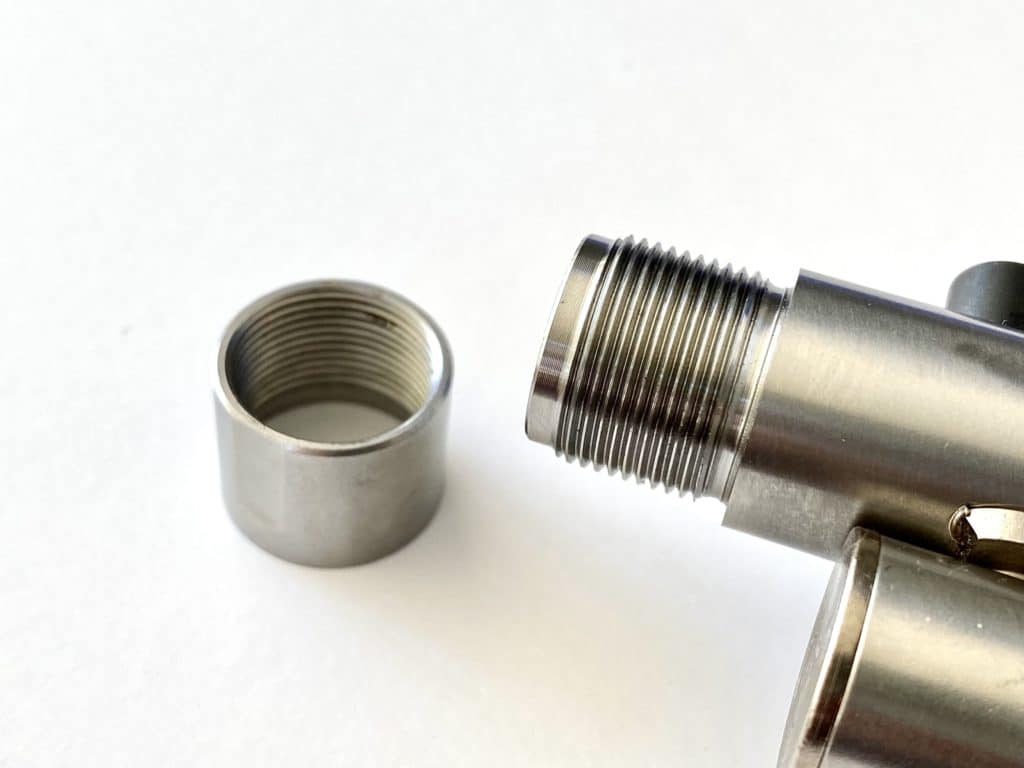
The 1895 SBL’s barrel is threaded at 11/16″ x 24 for a suppressor or muzzle brake, another nod to modern shooting, and sports a factory-installed thread protector.

I first fired the Model 1895 SBL with open sights and had no problem pegging three-shot groups of approximately two-inches at 50 yards. To truly test for accuracy though, the SBL required an optic, so I mounted one of my favorite scopes for shorter to mid-range shooting, the Z6i 1-6×24 made by Swarovski.
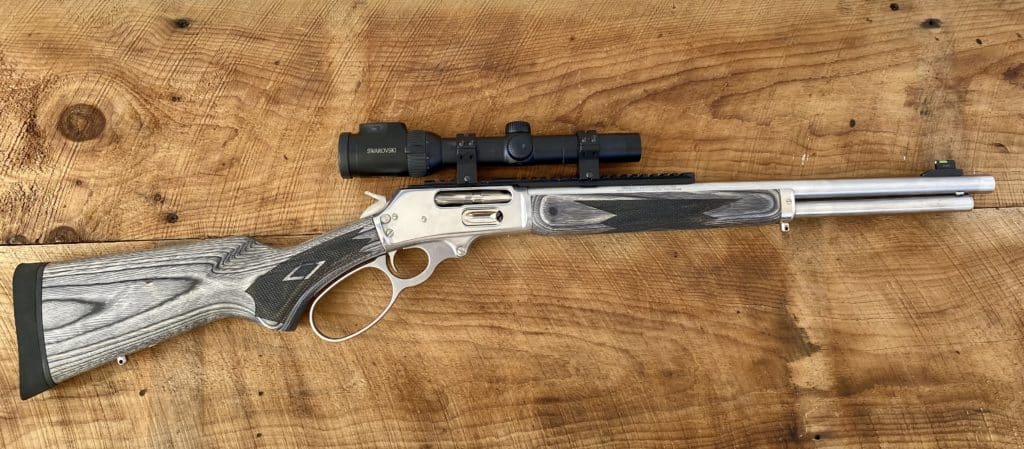
I was just a week from heading to West Texas and I wanted my hunting partner to use the SBL on some Lone Star hogs. So, I zeroed the SBL and the Z6i at 50 yards using Barnes VOR-TX .45-70 Govt. ammunition firing a 300-grain TSX copper bullet. It took a half dozen shots for me to get on the bullseye; I let the rifle barrel cool down and then shot three times at a new target.
And I was semi-stunned to see that all three shots were touching, with a group that measured just .30-inches.
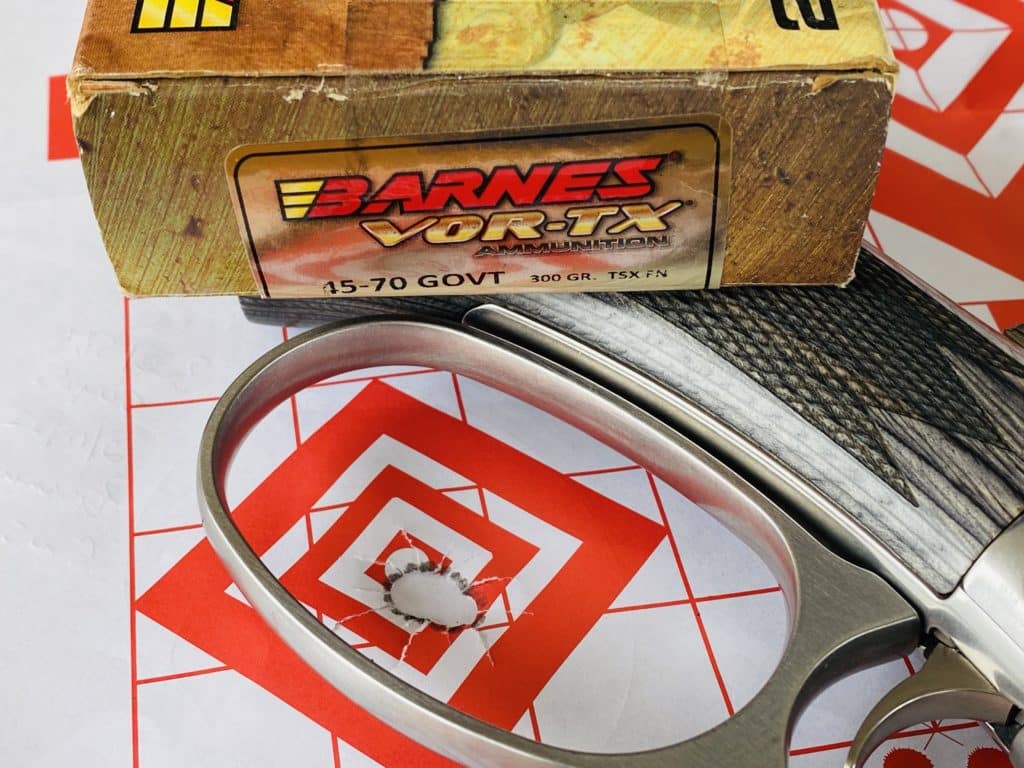
Once in Texas, good friend Randy Schiferl took down two hogs with the SBL and the Barnes ammunition, a 225-pound boar at 80 yards and a 180-pound sow at 60 yards. Both dropped where they stood from a single round of the Barnes sledge hammer load.

Back from Texas, I returned to my outdoor range here in Wisconsin and took the SBL through its paces at 100 yards for accuracy testing. I started with the Barnes and after a couple of shots realized I needed to adjust the Z6i scope for distance, did so, and then began shooting three-, four- and five-shot groups.
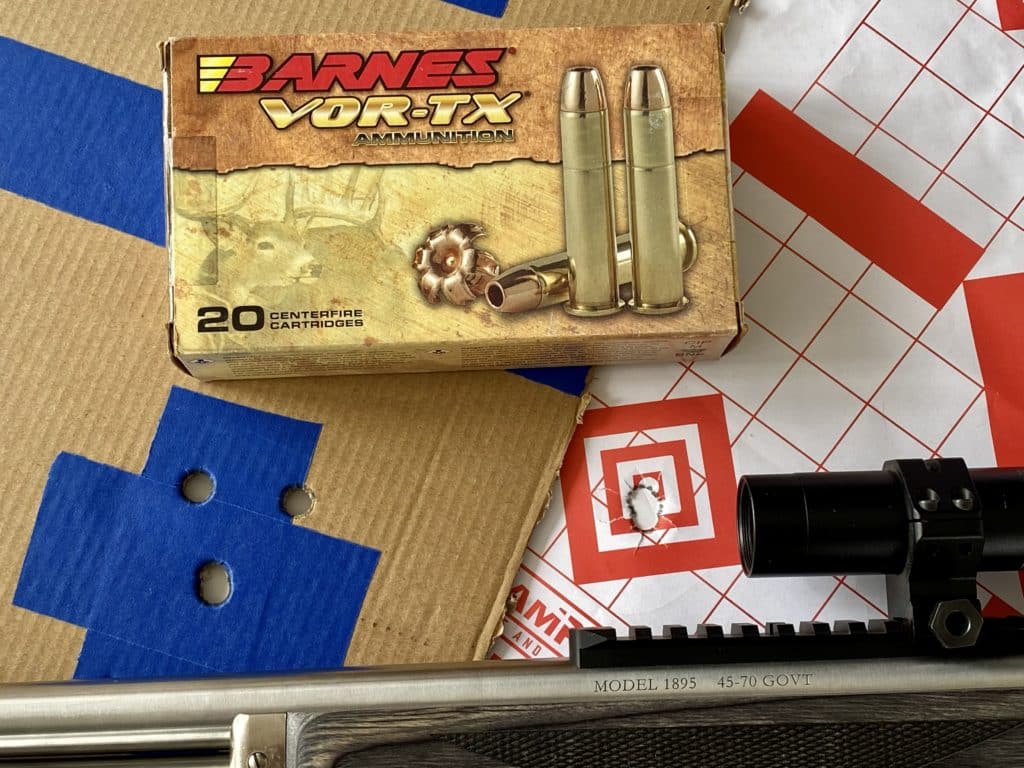
My best four-shot group with the Barnes measured 1.3-inches, my best five shot at 1.57-inches.
Then, I switched to two Hornady brands: LEVERevolution firing a 250-grain Monoflex bullet and LEVERevolution launching Hornady’s 325-grain FTX bullet.
The 250-grain Monoflex rounds averaged right at two-inches for four- and five-shots. The 325-grain FTX rounds punched four shots into a 1.4-inch group, with Shot #5 widening the group to 1.9-inches.
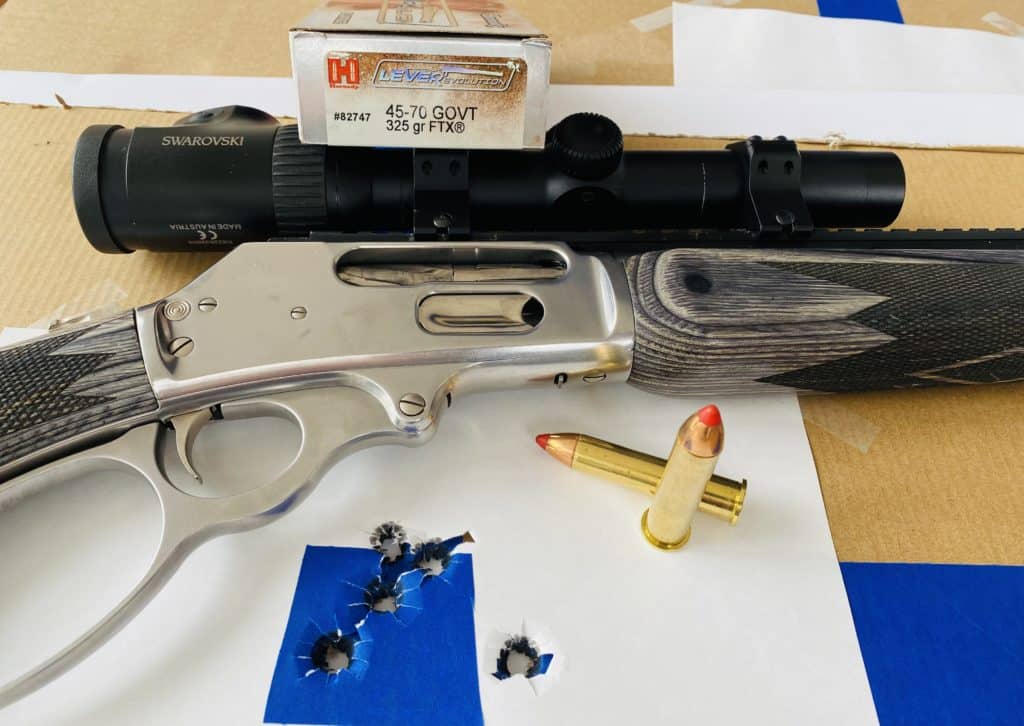
Of note, LEVERevolution launching the 325-grain FTX bullet upped the recoil significantly over the other two rounds, which already provided stout recoil. Of course, I was shooting a .45-70 centerfire rifle, not plinking along with a .22LR, and no one shoots this big-bore expecting a slight push to the shoulder.
Think, recoil similar to a 12-gauge pump shooting 3-inch shells on the Barnes and Monoflex rounds, and a 3.5-inch turkey load for the FTX.
I didn’t chronograph the .45-70 rounds. I simply didn’t have a great deal of it on hand. It’s become a caliber that’s harder to find, and I wanted to save rounds for future hunting this fall. But given how badly the Barnes wrecked those two West Texas hogs, I figured the ballistics were big game suitable!
As far as functionality, the lever action on the Model 1895 SBL worked smoothly the whole time I’ve used the rifle. I put a drop of oil on the lever screw and let it work its way in when I first unboxed the rifle but that was the extent of lubrication to that area of the rifle.
Loading rounds into the rifle’s loading gate was easy, requiring only to push down the gate with the tip of the round and then a nudge forward. Even with some finger and hand flexibility issues, Schiferl had no issues loading the SBL and the big loop lever also gave him additional leverage to chamber rounds. By the end of our hunt, and some additional range time, he decided to buy his own 1895 SBL.
The trigger on the SBL averaged 3 pounds, 3 ounces of pull, according to my Lyman Electronic Trigger Pull Gauge. I would not rate the trigger pull as crisp, exactly, but there was no staging or hesitation between a firm squeeze and the sear’s release.
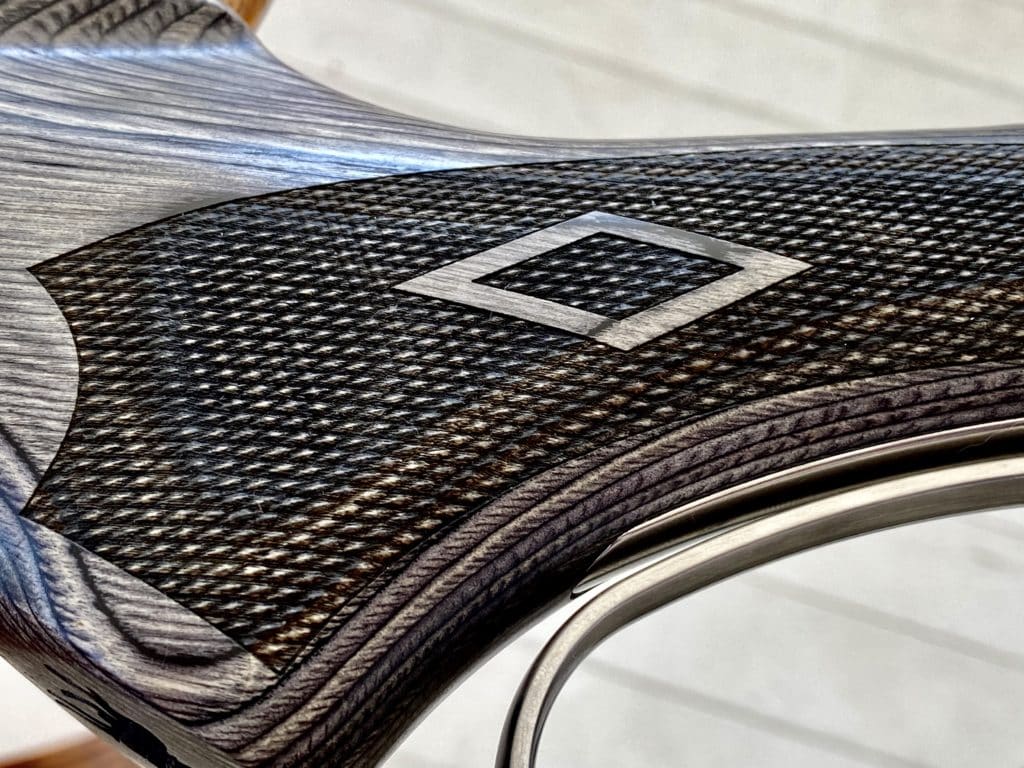
As to the gray weathered-look finish of the laminated wood stock and forend: liking or not liking this color scheme will fall under the heading of “personal preference.” To me, it looks like the side of an old barn. No go. I’d much prefer a standard hardwood with a semi-gloss finish or even a composite stock and forend.
But that’s about preference and has nothing to do with the rifle’s functionality.
However, the laminate wood itself struck me as too soft, as the checkering on both sides of the pistol grip wore down noticeably, especially on the right side. This, with under 200 rounds through the SBL.
For the collector and general fan of the lever-action, the Model 1895 SBL, and all other Ruger/Marlins rifles to come have distinctive characteristics to separate them from previous Marlin models. To start, the Ruger-made Marlins have the location of manufacture on the barrel which reads, “Mayodan, NC,” and a new “RP” proof mark located on the left rear of the barrel.
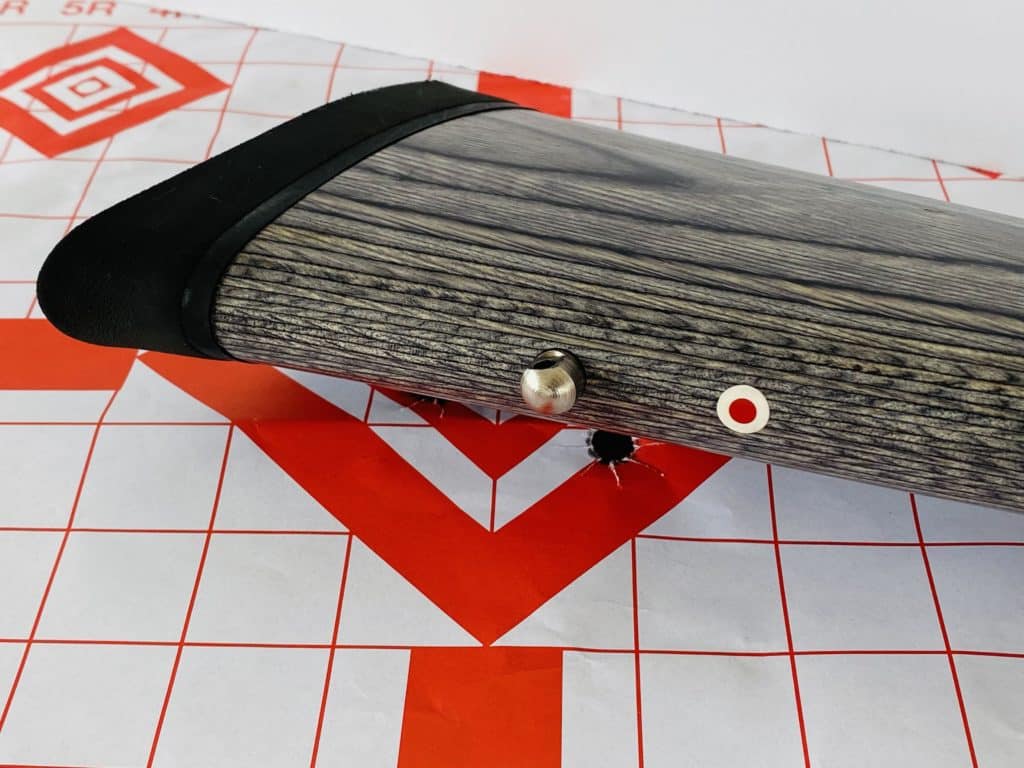
Serial numbers on Ruger-made Marlins begin with the serial prefix “RM.” Plus, the traditional black and white Marlin bullseye located on the bottom and rear of rifle stock is now red and white.
There is also a stylish Marlin “Horse and Rider” logo laser engraved on the bottom of the stock’s grip.
One issue concerning the new Ruger-made Marlins has to do with a narrative bouncing around in recent reviews of the SBL and the social media landscape: that narrative suggests the Marlin acquired through the bankruptcy sale was a struggling manufacturer turning out lousy guns, and Ruger has “rescued” the brand.
Yes, Ruger has certainly done very good work with the new SBL, made changes and additions that have resulted in an improved rifle. However, pre-Ruger Marlins were some pretty damned good rifles, too.
Marlin stopped being a stand-alone brand in 2007-2008 when it was purchased by the now-defunct Freedom Group, which was the parent corporation of Remington. Eventually, Freedom Group became the Remington Outdoor Company (ROC) and it included not only the Remington and Marlin brands but Advanced Armament, Bushmaster, and DPMS.
Once it became an ROC brand, ROC moved Marlin production from its historic New Haven, Connecticut, facility to the Remington factory in Ilion, New York. Soon afterward, numerous complaints began to surface about the quality of Marlins coming out of Ilion, including the structural integrity of the wood, poor stock-to-receiver fit, and ammunition feeding malfunctions.
All true. But two larger realities concerning the Marlin brand received little attention.
First, and before it was sold to ROC, Marlin was at a point where it either would have to spend millions of dollars upgrading old and worn-out machinery and manufacturing processes at New Haven or sell. Marlin’s quality was already beginning to suffer. So, Marlin sold to ROC.
Second, once it had purchased Marlin, it was ROC that began spending those millions of dollars to upgrade Marlin’s tooling and processes. It took time. But eventually, Marlin was making much-improved rifles of a higher quality than the 2007-2008 versions.

Case in point: the Marlin Dark Series rifles, launched in 2019. More tactical in looks than traditional Marlins, the Dark Series sported black painted wood stocks and forends, threaded barrels for suppressors, and long Picatinny rails atop the receivers. The big loop levers were wrapped in black paracord and the rifles came with black paracord slings, too.
I used and reviewed three of the Dark Series rifles and still own two of them (the Dark Series 336 in 30-30 Win. and the 1895 chambered in 444 Marlin), and they are fine lever actions, accurate and reliable. The lever action and triggers on all three rifles I used and reviewed worked smoothly and without a single malfunction, at the range, and during my big game hunts.
So, Ruger, in this writer’s opinion, did not buy a wart-covered frog in need of a prince charming makeover.
In Marlin, Ruger bought a rifle maker on the upswing, albeit one in need of additional corporate support, and Ruger, with its market presence, manufacturing expertise, and available cash, is clearly providing that support.
Ruger and Marlin have made a fine start with the Model 1895 SBL and given the Ruger track record, lever-action fans should see many more quality lever actions stamped “Mayodan, N.C.” for years to come.
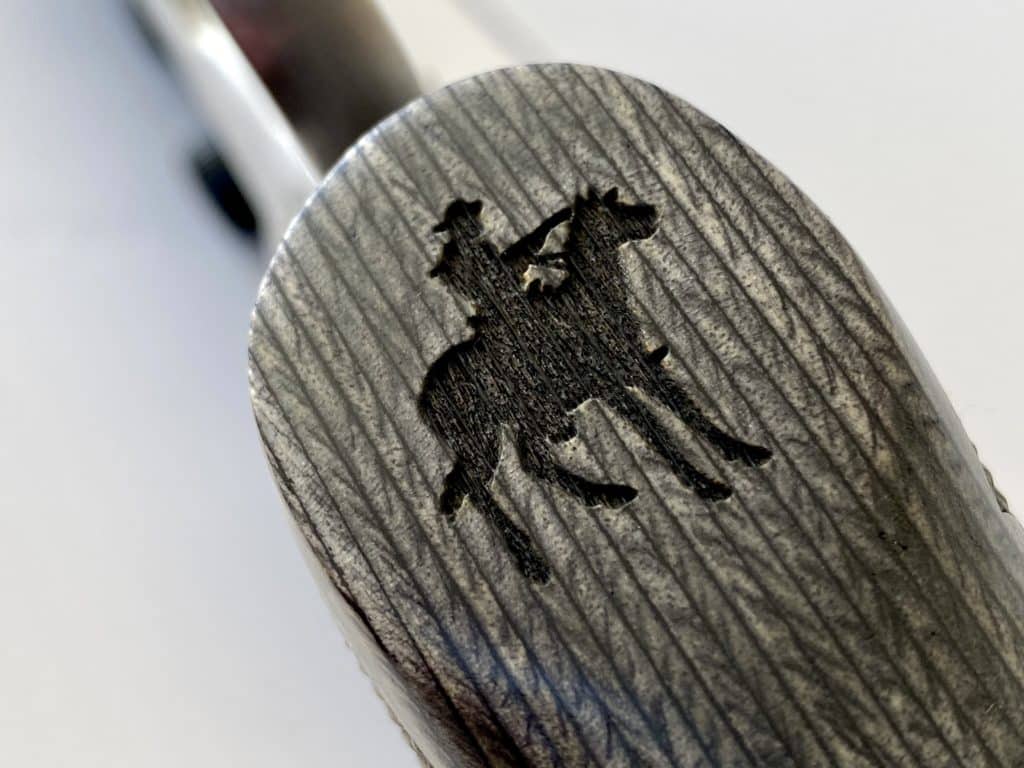
Specifications: Marlin Model 1895 SBL
Model#: 70478
Caliber: .45-70 Govt
Capacity: 6+1
Barrel: Cold Hammer-Forged 410 Stainless Steel
Barrel Twist: 1:20″ RH Grooves 6
Barrel Length: 19″
Barrel Thread Pattern: 11/16″ x 24
Receiver, Lever and Trigger Guard Plate: CNC machined from 416 stainless steel forgings
Stock and Forend: Wood Laminate, Weathered Gray Finish, Checkered
Receiver Material: Stainless Steel
Front Sight: High-Visibility Tritium Fiber Optic
Rear Sight: Adjustable Ghost Ring
Weight: 7.3 lbs.
Overall Length: 37.25″
Length of Pull: 13.38″
Safety: Push-button, cross bolt manual safety and traditional half-cock hammer.
INC: Polished Thread Cap, 11” Picatinny rail atop receiver/barrel, sling studs, and soft rubber butt pad.
Suggested Retail $1,399.00.